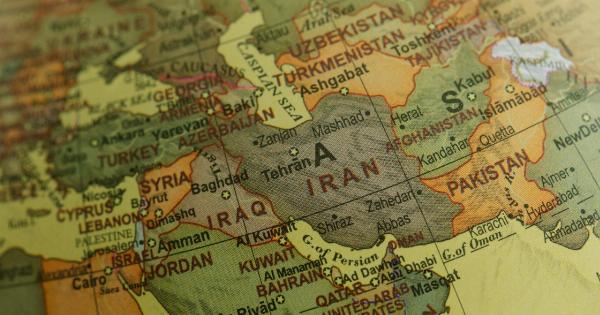The AIDS pandemic has been one of the most devastating health crises in modern history. Since its identification in the early 1980s, AIDS has claimed millions of lives and continues to affect millions more.
However, there is hope and progress in the fight against AIDS, and the key lies in personal responsibility and collaboration between government and non-governmental organizations (NGOs). By promoting personal responsibility and joining forces in combating AIDS, we can take significant steps towards curbing the spread of the disease and improving the lives of those affected.
The Role of Personal Responsibility
Personal responsibility plays a critical role in the fight against AIDS. Every individual has the power to protect themselves and others from HIV, the virus that causes AIDS.
Through education and awareness, individuals can make informed decisions about their sexual health, such as practicing safe sex, getting tested regularly, and seeking early treatment if necessary. Personal responsibility also extends to preventing the transmission of the virus from mother to child during pregnancy, childbirth, or breastfeeding.
Government Initiatives
The government plays a vital role in combatting AIDS through various initiatives. One of the primary responsibilities of the government is to provide widespread access to information and prevention tools.
This includes implementing comprehensive sex education programs in schools, promoting condom use, and making HIV testing and counseling easily accessible.
Governments should also ensure the availability and affordability of antiretroviral therapy (ART) for those infected with HIV, as effective treatment not only improves their quality of life but also reduces the risk of transmitting the virus to others.
The Need for Collaboration
Collaboration between government agencies and NGOs is essential for a comprehensive and effective response to the AIDS epidemic.
NGOs, with their expertise, grassroots reach, and community-based approach, play a crucial role in filling the gaps left by governmental efforts. They provide targeted interventions, support services, and advocacy for at-risk populations, such as sex workers, injection drug users, and LGBTQ+ communities.
NGOs also work towards reducing stigma and discrimination, which often prevents individuals from seeking testing, treatment, and support.
Examples of Successful Collaborations
Throughout the years, there have been numerous successful collaborations between government and NGOs that have yielded significant progress in combating AIDS.
For instance, in Brazil, the government has partnered with NGOs to implement a successful harm reduction program for injection drug users. This initiative provides clean needles, syringes, and education on safe injection practices, reducing the transmission of HIV and other bloodborne infections.
In South Africa, the government has collaborated with NGOs to implement large-scale HIV testing campaigns.
By reaching out to communities and providing testing services in easily accessible locations, these campaigns have resulted in increased HIV diagnosis rates, allowing individuals to access life-saving treatment.
Evidence-Based Policies
Both personal responsibility and collaboration between government and NGOs must be driven by evidence-based policies.
Governments should invest in research to understand the specific needs and vulnerabilities of their population, and use this knowledge to inform their interventions. Additionally, policies must be flexible and adaptable to evolving scientific understanding and emerging challenges.
It is imperative to learn from successful initiatives, replicate them where appropriate, and make evidence-based adjustments for continuous improvement.
Importance of International Cooperation
AIDS is a global crisis that requires international cooperation. Governments and NGOs should work together across borders, sharing best practices, knowledge, and resources.
International collaboration can facilitate the development and implementation of effective strategies that transcend regional boundaries, benefiting countries with different socio-economic contexts and diverse populations. Platforms such as the Joint United Nations Programme on HIV/AIDS (UNAIDS) provide opportunities for collaboration, coordination, and shared learnings on a global scale.
Challenges and the Way Forward
While progress has been made in the fight against AIDS, significant challenges remain. Funding shortages, stigma and discrimination, lack of access to healthcare, and inadequate sex education are just a few of the obstacles that need to be addressed.
To overcome these challenges, there is a need for continued commitment and investment from governments, increased public awareness and education, as well as strengthened collaboration between government and NGOs. By prioritizing the fight against AIDS and working together, we can move closer to achieving an AIDS-free generation.
Conclusion
Combating AIDS requires the combined efforts of individuals, governments, and NGOs. Personal responsibility, through education, prevention strategies, and early treatment, empowers individuals to protect themselves and others.
Collaboration between government agencies and NGOs amplifies these efforts, filling gaps, and reaching at-risk populations. By implementing evidence-based policies, prioritizing international cooperation, and addressing challenges head-on, we can collectively work towards a future where AIDS is no longer a global health crisis.































